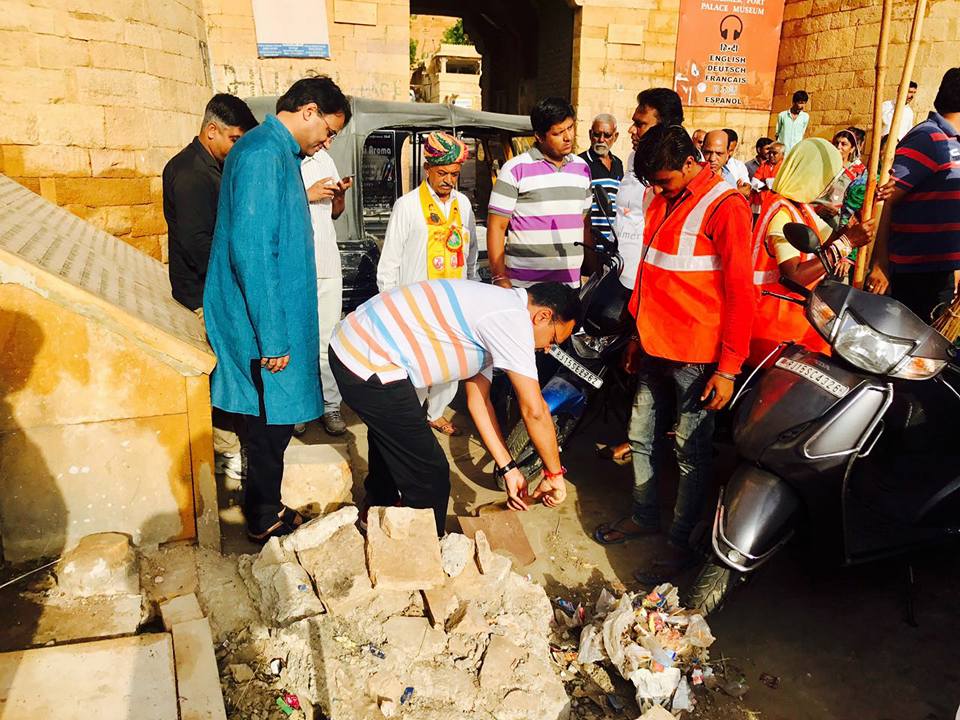Real-Time Competition By Govt. To Help District Collectors Become #ChangeAgents!
Attention, IAS officers! This is your chance to prove your mettle.

Scroll through The Better India, and you’re bound to find articles detailing the excellent work done by civil servants for their country, which often goes unnoticed in mainstream media. There are certain stereotypes (not entirely unfounded) associated with civil servants, which these stories try to break.
With the NITI Aayog releasing its baseline ranking for 115 ‘aspirational districts’ late last week, there are now attempts to closely monitor and measure the work district collectors do for some of India’s most backward districts.
These district-wise rankings are based on 49 indicators across sectors including education, health and nutrition, agriculture, water resources, financial inclusion, infrastructure and skill development.

“Although there is no shortage of opinions on what ails the IAS or what fixes should be implemented, there has been a surprising lack of hard data on its ranks and their performance. Bureaucratic activities in India are conducted concurrently at the district, state, and central levels with striking variation in the degree of efficiency at each level—not to mention wide variation across geographies,” claim political scientists Milan Vaishnav and Saksham Khosla in a 2016 column.
With its ‘Champions of Change’ Dashboard, which will collect and monitor district-level data in real time, the NITI Aayog is trying to foster a sense of competition at the state, district and some would argue even the block level. On the dashboard (developed in collaboration with Andhra Pradesh government), which was opened to the public on April 1, collectors can now submit the latest available data of their respective districts.
These 20 Improved Performance Districts based on % change or Delta unveils the work done by District Collectors on ground as #ChangeAgents. Drawing from Baseline Data, the Rankings are expected to change as officers gear up to compete, with oneself & others #CompetitiveFederalism pic.twitter.com/7F7cT3opWf
— NITI Aayog (@NITIAayog) April 1, 2018
Senior bureaucrats and other official representatives from these 115 districts underwent training on March 23 to understand the mechanics of this dashboard, including data input, verification and presentation. Following this announcement, the NITI Aayog is expected to set up a Delta Ranking facility of these districts based on what it calls “incremental progress” in May 2018.
According to the official government release, “districts can learn from each other’s experiences using the ‘Best Practices’ document that NITI Aayog has prepared and circulated to the district collectors.”
“We want to create competition at the State, District and even the block level. Why do some districts lag on crucial indicators of human development while other districts in the same State excel? Bridging this ‘distance to frontier’ is key to ensuring the States’ prosperity and the Nation’s progress,” said NITI Aayog CEO Amitabh Kant.

“The Aspirational Districts programme, through real-time monitoring and proactive course corrections, reinforces the mechanisms of cooperative and competitive federalism between the Centre and the states, down to the districts,” Kant goes onto add.
These initiatives fall under the Centre’s ‘Transformation of Aspirational Districts’ programme, which it launched in January 2018 to efficiently transform these 115 undeveloped districts.
Also Read: How an IAS Initiative Is Weaving Pashmina’s Profits Back to Ladakhi Women
“The broad contours of the programme are Convergence (of Central & State Schemes), Collaboration (of Central, State level ‘Prabhari’ Officers and District Collectors), and Competition among districts driven by a Mass Movement or a Jan Andolan. With States as the main drivers, this program will focus on the strength of each district, identify low-hanging fruits for immediate improvement, measure progress, and rank districts,” says the government in its official release.
With Big Data playing a more significant role in all aspects of life, this reform initiative is long overdue. With clear metrics outlined in this ranking system, bureaucrats managing the affairs of a district are now expected/encouraged to compete with and learn from the best-performing districts in the state.
A clear measure of outcomes put up in the public domain is the surest way to light the fire under officers who underperform and enjoy the comforts that taxpayer money offers.
Also Read: This Dedicated IAS Officer’s Novel Ideas Are Preventing Tribal Kids From Dropping Out!
In fact, this could be the first step towards using data-driven performance metrics to determine salary and remuneration decisions for civil servants. Many political scientists and public intellectuals have called for performance-based pay for those working in the public sector.
Of course, the data doesn’t capture the entire picture, but it’s a damn good place to start. “For the first time, thanks to a new body of literature that leverages big data with cutting-edge statistical methodologies, there is rigorous evidence to help inform reform discussions. While the solutions implied by the data are not revolutionary, they have the virtue of being based on solid evidence,” Milan Vaishnav and Saksham Khosla go onto add.
Like this story? Or have something to share? Write to us: [email protected], or connect with us on Facebook and Twitter.
NEW: Click here to get positive news on WhatsApp!
If you found our stories insightful, informative, or even just enjoyable, we invite you to consider making a voluntary payment to support the work we do at The Better India. Your contribution helps us continue producing quality content that educates, inspires, and drives positive change.
Choose one of the payment options below for your contribution-
By paying for the stories you value, you directly contribute to sustaining our efforts focused on making a difference in the world. Together, let’s ensure that impactful stories continue to be told and shared, enriching lives and communities alike.
Thank you for your support. Here are some frequently asked questions you might find helpful to know why you are contributing?


This story made me
-
97
-
121
-
89
-
167













